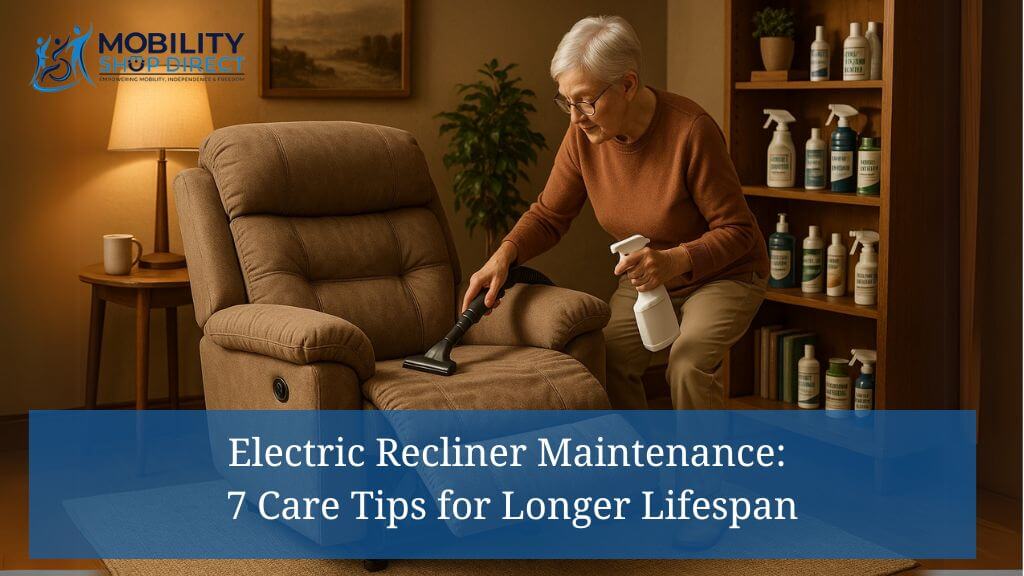Ever noticed how quickly daily use can take a toll on your favorite electric recliner? From sticky buttons to clunky mechanisms, neglecting regular upkeep can turn your comfortable oasis into a frustrating eyesore before you know it. The good news? With just a little bit of attention, you can ensure your recliner remains as functional and comfortable as the day you bought it.
This guide offers practical, straightforward tips to prevent costly repairs and extend your recliner’s lifespan. You’ll discover how to care for upholstery, maintain smooth-moving mechanisms, ensure electrical components operate efficiently, and even spot early signs of wear—before they become major problems.
Ready to give your recliner the care it deserves? Let’s dive into the essentials and keep your relaxation station in perfect condition for years to come.
Table of Contents
- Why Maintenance Matters for Recliner Longevity
- Common Issues Resulting from Neglect
- Upholstery Care
- Mechanical Maintenance
- Electrical Component Checks
- Conclusion
Key Takeaways
Want your electric recliner to stand the test of time? Proper care is essential. This guide outlines practical maintenance steps to keep it in top condition:
- Clean Upholstery Regularly: Use fabric-safe cleaners and follow the care tag instructions to prevent stains, odors, and material breakdown.
- Inspect and Lubricate Moving Parts: Apply furniture-safe lubricant to joints, hinges, and motorized tracks every 3–6 months.
- Check Electrical Components: Inspect power cords, plugs, and connections for wear, and replace damaged parts promptly.
- Address Repairs Quickly: Fix small issues such as squeaks or loose screws early to prevent larger, more expensive problems.
- Stick to a Maintenance Schedule: Regularly cleaning, lubricating, and inspecting your recliner ensures long-term functionality and aesthetic appeal.
By taking these proactive steps, you’ll save money on repairs, boost the longevity of your chair, and ensure it remains a comfortable haven for years to come.
Why Maintenance Matters for Recliner Longevity
Proper maintenance of your electric recliner is crucial—not just for appearances but for its functionality and lifespan. Think of it as maintaining a car: routine checkups and care keep everything running smoothly. Electric recliners have moving parts, upholstery, and electrical components that require regular upkeep to prevent early wear and tear.
For instance, lubricating mechanisms reduces strain on the motor, while keeping upholstery clean prevents stubborn stains and material damage. Electrical components last longer when inspected regularly, avoiding issues like faulty power cords or overworked motors. By prioritizing upkeep, you’re protecting your investment and ensuring years of reliable use.
Common Issues Resulting from Neglect
Ignoring maintenance can lead to numerous problems:
- Mechanical Failures: Dust, debris, and friction in moving parts can cause your recliner to stick, squeak, or stop functioning altogether.
- Upholstery Damage: Stains, discoloration, and cracking from untreated spills or routine wear degrade the overall look and feel of your chair.
- Electrical Hazards: Frayed cords, loose connections, or overloaded motors can render the recliner inoperable—or worse, pose a safety risk.
Small, overlooked issues like a loose screw or slight stiffness escalate into costly repairs if left unresolved. But with preventive care, these headaches are easily avoidable. Let’s start with keeping your recliner’s upholstery clean and damage-free.
How to Properly Clean and Maintain Upholstery
Choosing the Right Cleaner for Your Recliner Material
Before applying any cleaning product to your recliner, identify its upholstery material. Using the wrong cleaner can lead to discoloration, damage, or even void a warranty.
- Leather: Select a leather-specific cleaner or a mild soap solution. Avoid harsh chemicals, which dry out the leather and cause cracks.
- Microfiber/Synthetic Fabrics: Check the cleaning code on your recliner’s label; “W” means water-based cleaners are safe, while “S” indicates solvent-based ones are required.
- Custom or Delicate Fabrics: Test any cleaner on a hidden spot to confirm it won’t cause damage or discoloration.
This step ensures effective cleaning without risking your material’s integrity. Now, let’s move on to regular cleaning techniques.
Step-by-Step Recliner Cleaning Guide
Keeping your recliner spotless requires just a few steps:
- Vacuum Thoroughly: Use an upholstery attachment to clean the cracks, crevices, and surfaces, removing debris and dust.
- Spot Clean Stains: For any marks or spills, gently dab stains with your selected cleaner. Avoid scrubbing, which can worsen stains or damage fibers.
- Condition Leather or Protect Fabric: Use leather conditioner to maintain softness and prevent cracking. For fabric, apply stain-repellent sprays to boost durability.
- Wipe Down Hard Surfaces: Use a damp cloth to clean armrests or exposed parts of the recliner frame.
Incorporating this quick monthly routine ensures your recliner remains fresh and free from stains. Up next, learn how to safeguard your upholstery against future messes.
Preventing Stains and Maintaining Fabric Durability
Prevention is the key to keeping upholstery in great condition:
- Position Wisely: Avoid placing your recliner in direct sunlight, which can fade both fabric and leather.
- Protect High-Traffic Areas: Use slipcovers or furniture protectors for added defense against potential spills, especially in homes with kids and pets.
- Be Proactive with Spills: Clean any mess immediately, as letting liquid soak in can lead to permanent stains.
- Consider Fabric Guard: Apply fabric protectants periodically to repel stains and maintain water resistance.
By taking these steps, you’ll not only keep your recliner looking like new but also minimize long-term fabric deterioration. Next, let’s dive into the mechanical upkeep of your chair.
Inspecting and Lubricating Moving Parts
Identifying Key Mechanism Components That Need Lubrication
Your electric recliner’s relaxing functionality depends on several crucial components:
- Joints and Hinges: Facilitate smooth movement and prevent noisy operation.
- Motorized Tracks: Essential for motorized operation, requiring lubrication for optimal performance.
- Bolts and Screws: Secure components and require periodic tightening for stability.
These parts experience wear over time. Knowing where to focus ensures your recliner operates seamlessly.
How to Safely Apply Furniture-Safe Lubricants
- Prepare the Recliner: Extend your recliner to fully expose the mechanism.
- Clean the Parts: Remove accumulated dust or grime from moving elements with a dry cloth.
- Apply Lubricant Sparingly: Use silicone-based spray to target hinges, tracks, and contact points. Avoid overapplication to prevent residue buildup.
- Operate the Recliner: Move the chair through its full range of motion to distribute the lubricant evenly.
Repeat lubrication every 3–6 months or if you notice stiffness. Smooth mechanisms are important, but let’s not overlook the electrical aspects.
Ensuring Electrical Components Are in Good Condition
How to Test Power Cords and Connections
To keep your electric recliner functional, check:
- Power Cord Integrity: Look for visible signs of damage like frays or cracks. Replace compromised cords immediately.
- Connection Stability: Ensure all plugs fit snugly into outlets and the motor box to prevent disconnections.
- Unusual Noises: Investigate buzzing or whirring sounds, which signify electrical strain or loose connections.
If issues persist despite these checks, consult a professional to avoid exacerbating the problem or creating safety risks. For a deeper understanding of how these components function, check out our simple breakdown of how electric recliner chairs work.
Conclusion
Maintaining your electric recliner doesn’t require advanced technical skills—just a bit of effort and regular attention. By cleaning upholstery, lubricating moving parts, and inspecting electrical components, you’ll protect your investment while ensuring maximum comfort and functionality. Preventive care, like addressing minor issues early and following a maintenance schedule, is significantly less expensive than major repairs later.
Your recliner is more than furniture; it’s a daily source of comfort and relaxation. Treat it right, and it will continue to provide a cozy retreat for years to come. Are you ready to implement these tips? Your recliner—and your future self—will thank you! To find the perfect model or upgrade, browse our full range of electric recliners.



